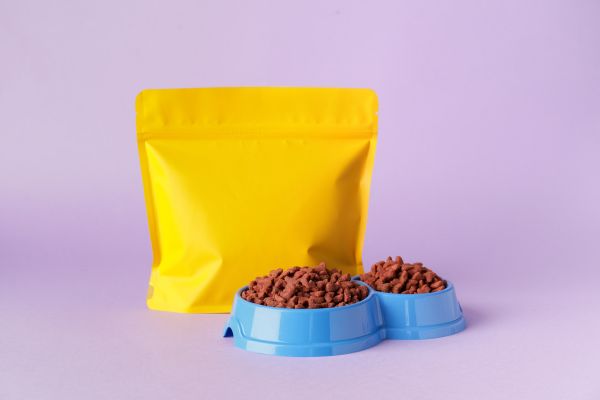Cats are curious creatures, often exploring their surroundings with an inquisitive nose and an adventurous spirit. While this trait is endearing, it can also lead them into dangerous situations, especially when it comes to food. As a pet owner, understanding toxic foods for cats is crucial in keeping your feline friend safe and healthy. Many human foods that seem harmless or even beneficial can have devastating effects on a cat’s delicate system.
Why Cats Are More Vulnerable to Toxic Foods
Unlike humans and even some other pets, cats have a highly specialized metabolism. Their bodies are designed to process a carnivorous diet, making them less capable of handling certain compounds found in various foods. Moreover, their smaller size means even a small amount of a toxic substance can result in severe symptoms. This heightened vulnerability underlines the importance of knowing which foods to keep far away from your cat’s reach.
Common Household Foods That Endanger Cats
Chocolate often tops the list when discussing toxic foods for cats. Theobromine, a compound present in chocolate, can cause serious issues such as heart arrhythmias, muscle tremors, and even seizures. Dark chocolate and baking chocolate contain higher concentrations, making them particularly dangerous.
Onions and garlic, though staples in many kitchens, are also highly toxic to cats. They contain compounds that damage red blood cells, leading to anemia. Even small amounts, such as those found in flavored baby foods or seasoning powders, can accumulate over time and cause harm.
Grapes and raisins, while considered healthy snacks for humans, pose a mysterious but severe threat to felines. Even a small quantity can lead to kidney failure in cats, resulting in symptoms like vomiting, lethargy, and decreased appetite.
Caffeine is another dangerous ingredient often overlooked. Found in coffee, tea, and energy drinks, caffeine stimulates the central nervous system and heart, which can trigger rapid breathing, heart palpitations, and muscle tremors in cats.
Dairy Products and Cats: A Misunderstood Risk
Many people associate cats with saucers of milk, thanks to popular culture. However, most adult cats are lactose intolerant. Feeding them milk or other dairy products can lead to digestive issues such as diarrhea and stomach cramps. While not as acutely toxic as other foods, dairy still poses a health risk and should be avoided.
Fat Trimmings, Bones, and Raw Meat
Feeding cats scraps from the table, such as fat trimmings or cooked bones, might seem harmless but can be dangerous. Fat trimmings can cause pancreatitis, a painful and potentially life-threatening condition. Cooked bones, on the other hand, are prone to splintering and can cause choking or internal injuries.
Raw meat and raw eggs are also problematic. They can carry bacteria like Salmonella or E. coli, leading to severe food poisoning. Additionally, raw eggs contain avidin, an enzyme that interferes with the absorption of biotin, a vital B vitamin for your cat’s health.
Artificial Sweeteners and Processed Foods
Xylitol, a sugar substitute found in many sugar-free products like gum and baked goods, is extremely toxic to cats. It causes a rapid release of insulin, leading to hypoglycemia. In severe cases, liver failure may follow, making it a critical ingredient to avoid.
Processed foods in general are not suitable for feline consumption. They often contain high levels of salt, preservatives, and artificial flavorings, which can wreak havoc on your cat’s system over time.
Alcohol and Cats: A Dangerous Combination
Alcohol is highly toxic to cats even in tiny amounts. Ingesting alcoholic beverages or foods containing alcohol can lead to vomiting, diarrhea, difficulty breathing, and in severe cases, coma or death. Cats’ livers are simply not equipped to process alcohol, making it one of the most dangerous substances they can encounter.
Symptoms of Food Toxicity in Cats
Recognizing the signs of food toxicity can save your cat’s life. Symptoms vary depending on the food ingested but commonly include vomiting, diarrhea, lethargy, difficulty breathing, tremors, and abnormal heart rhythms. If you suspect your cat has consumed any toxic foods, immediate veterinary attention is crucial.
Preventing Accidental Ingestion of Toxic Foods
Prevention is always better than cure when it comes to toxic foods for cats. Store all human food securely out of reach and educate family members about the dangers certain foods pose to felines. When feeding your cat, stick to veterinarian-approved diets and treats designed specifically for cats.
Additionally, avoid leaving food unattended on countertops or tables where a curious cat might sneak a taste. Being vigilant and proactive is key to safeguarding your pet’s health.
Conclusion: Protecting Your Cat from Hidden Dangers
Your cat relies on you for protection against hazards they cannot understand. By learning about toxic foods for cats and making conscious choices about what is accessible in your home, you can create a safer environment for your feline companion. A little knowledge and extra care can go a long way in ensuring your cat lives a long, healthy, and happy life free from the dangers of harmful foods.
